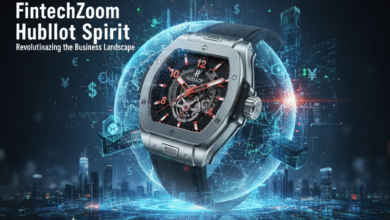Twitter: Official Mark or Ordinary People—Why the Divide?

In the realm of social media, Twitter stands out as a platform where voices resonate, trends emerge, and conversations evolve at lightning speed. With its diverse user base spanning from celebrities to activists to everyday individuals, Twitter has become a melting pot of ideas, opinions, and movements. However, amidst this digital cacophony, a distinct disparity arises between those with the official blue verification mark and the rest of the Twitterverse. This divide prompts us to explore the dynamics of authority, influence, and accessibility within the realm of Twitter.
The Blue Badge of Authority:
Twitter’s verification badge, adorned with a blue checkmark, has long been a symbol of credibility and authenticity. Initially introduced to verify accounts of public figures and organizations, the badge has evolved to encompass a broader spectrum of individuals deemed noteworthy or influential in their respective fields. From politicians to journalists to social media personalities, the blue checkmark confers a sense of legitimacy and authority upon its holders.
For verified users, the benefits extend beyond mere status symbol. The badge grants access to exclusive features, such as advanced analytics, priority support, and enhanced visibility in search results. Moreover, verified accounts enjoy protection against impersonation and account hijacking, safeguarding their online reputation and integrity. In essence, the blue verification badge serves as a stamp of approval, elevating certain voices above the digital din.
The Voice of the Masses:
On the other end of the spectrum lie the unverified masses—ordinary individuals who lack the official imprimatur of Twitter’s verification system. Despite their numerical superiority, these users often find themselves relegated to the sidelines, overshadowed by the amplified voices of verified accounts. Without the blue checkmark, their tweets may struggle to gain traction amidst the sea of content flooding Twitter feeds.
Yet, within this apparent disparity lies the essence of Twitter’s democratic ethos. Unlike other social media platforms that prioritize celebrity endorsements and corporate branding, Twitter prides itself on being a platform for the people, by the people. Here, the power of influence transcends traditional hierarchies, with viral tweets originating from unknown individuals capturing the world’s attention overnight. In this sense, Twitter serves as a levelling ground where ideas, rather than status, reign supreme.
The Quest for Recognition:
Despite the egalitarian ethos espoused by Twitter, the allure of the blue verification badge remains palpable for many users. Beyond its practical benefits, the badge symbolizes validation and recognition—a testament to one’s impact and relevance within the digital landscape. As such, the quest for verification becomes a quest for acknowledgment, as users vie for a coveted spot among Twitter’s elite ranks.
However, the criteria for verification remain shrouded in mystery, leading to accusations of bias and inconsistency in Twitter’s verification process. While some argue for transparency and accountability in the selection process, others view verification as a superficial metric that undermines the platform’s democratic ideals. Amidst these debates, the divide between verified and unverified users persists, underscoring the tension between authority and accessibility on Twitter.
Bridging the Gulf:
In the midst of this divide, initiatives emerge to bridge the gap between verified and unverified users, fostering a more inclusive and equitable Twitter experience. From community-driven campaigns to amplify marginalized voices to grassroots efforts to debunk misinformation, individuals across the platform work tirelessly to democratize the digital discourse. Moreover, Twitter’s recent initiatives to expand verification eligibility signal a step towards greater inclusivity, acknowledging the diverse contributions of users beyond traditional metrics of influence. In addition to this, there are multiple online tools that don’t support this “divide policy”. For example tools like Twitter 動画保存 does not create any partition, These tools also act like a bridge between this top class and low class of society as it allows the Blue-Tick accounts as well as Non-Blue-Tick accounts to downloads videos and other content easily and effectively without creating any discrimination among people.
In conclusion, the divide between official marks and ordinary people on Twitter reflects larger tensions surrounding authority, influence, and accessibility in the digital age. While the blue verification badge confers legitimacy and privilege upon its holders, it also underscores the platform’s commitment to democratizing discourse and amplifying diverse voices. As Twitter continues to evolve, the challenge lies in navigating these tensions while upholding the principles of openness, transparency, and inclusivity that define the platform’s essence.
Key takeaway: While the divide between verified and unverified users on Twitter may seem stark, it underscores larger tensions surrounding authority, influence, and accessibility in the digital age. Through initiatives aimed at bridging this gap and fostering inclusivity, Twitter continues to evolve as a platform that amplifies diverse voices and democratizes digital discourse.



